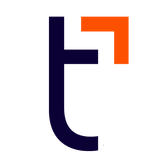
Table of contents
- 1.Power People Ops by automating HR
- 2.Start by creating digital employee records
- 3.Digitize the org chart
- 4.Centralize employee documents and e-signatures in the cloud
- 5.Manage permissions with care
- 6.Then automate hiring and onboarding
- 7.Templates can make it easy to automate hiring
- 8.Automate onboarding by building an onboarding flow
- 9.HR system of records improve efficiency
Creating an HR system of record is the first step to automating HR tasks.But to shift away from HR and toward People Ops, businesses must rethink how some of the most fundamental tasks of the function are handled. Creating an HR system of record is one of the first steps.
Power People Ops by automating HR
HR is responsible for maintaining records of some of the most vital components of the business, like:- Recruiting and hiring
- Onboarding
- Payroll
- Benefits
Start by creating digital employee records
An HR system of record is the backbone of automating the rest of your HR tasks and starts with the employee record. Employee records are updated and maintained by employees, decentrally, but stored in the centralized system. This enables People Ops to:1. Digitize the org chart
Since employee records are maintained by each employee with updates pushed in real-time, the business will always have an up-to-date org chart with the correct contact information, like personal email addresses, phone numbers, and job titles. This makes it easy for employees to quickly figure out who’s who and reach out with ease.2. Centralize employee documents and e-signatures in the cloud
Use a system like DocuSign to easily collect signatures from all parties.An HR system of record allows HR to easily manage documents from the cloud. It acts as a central repository for all the most important employee-centric company information like:
- Confidentiality agreements
- Employee handbook
- Policy updates
3. Manage permissions with care
HR data is some of the most sensitive and important data in the company. It’s HR’s responsibility — and legal obligation — to securely store and protect this information. When setting permissions for your HR system of record, do so prudently. The best practice is only to provide as much access as people genuinely need. A good rule of thumb to follow is:- Administrators: HR leaders, C-level executives, board members, accounting team members, and auditors
- Editors: Managers
- Users: Employees
Then automate hiring and onboarding
Offload the HR tasks that can be automated so your team can focus on what really matters — engaging candidates, new hires, and employees.Use an HR system of record to streamline and automate HR tasks required for hiring and onboarding.Since you’ve already built or purchased an HR system of record, you can use it to streamline HR tasks and outsource manual actions to the system or new hires.
Templates can make it easy to automate hiring
Consider creating them for:- Offer letters: Write it once, use it forever. Create a template and use the customizable fields of your HR system to populate employee-specific details, like name, job title, start date, hiring manager, and starting salary.
- Confidentiality agreements: Employees with access to specific data may need to sign confidentiality agreements or NDAs. Create a company template that makes it easy to plug-and-play individual details.
Automate onboarding by building an onboarding flow
Technology makes it easy to create a repeatable onboarding flow for all your employee types — full-time, part-time, contractor, and contingent worker. This looks different for each company but will likely include:- Completing new hire paperwork
- Signing employee documents
- Filing in the personal details of their digital employee record
- Familiarizing themselves with certain aspects of the business
HR system of records improve efficiency
With HR technology, like an employee system of record, your HR and People Operations teams can automate the day-to-day minutiae and free up time for what really matters — your people.This article is for informational purposes only, is not legal, tax or accounting advice, and is not an offer to sell, buy or procure insurance. TriNet is the single-employer sponsor of all its benefit plans, which does not include voluntary benefits that are not ERISA-covered group health insurance plans and enrollment is voluntary. Official plan documents always control and TriNet reserves the right to amend the benefit plans or change the offerings and deadlines.
This article may contain hyperlinks to websites operated by parties other than TriNet. Such hyperlinks are provided for reference only. TriNet does not control such web sites and is not responsible for their content. Inclusion of such hyperlinks on TriNet.com does not necessarily imply any endorsement of the material on such websites or association with their operators.

TriNet Team
Table of contents
- 1.Power People Ops by automating HR
- 2.Start by creating digital employee records
- 3.Digitize the org chart
- 4.Centralize employee documents and e-signatures in the cloud
- 5.Manage permissions with care
- 6.Then automate hiring and onboarding
- 7.Templates can make it easy to automate hiring
- 8.Automate onboarding by building an onboarding flow
- 9.HR system of records improve efficiency

